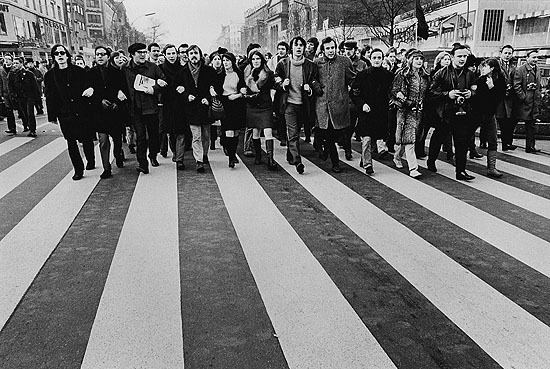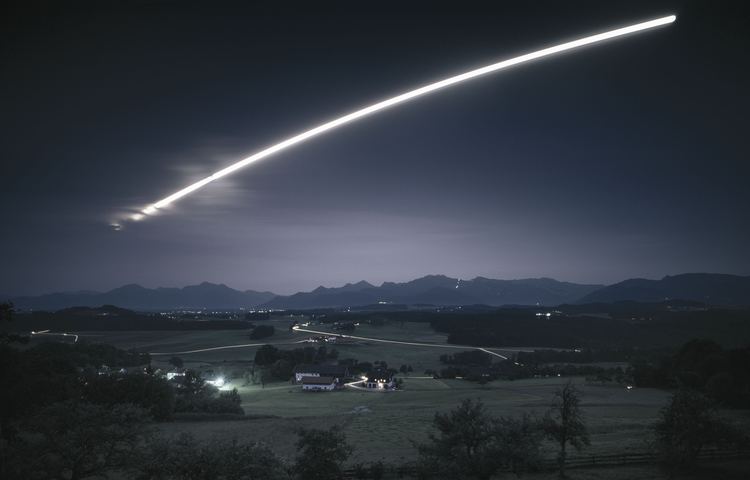Name Michael Ruetz | Role Photographer | |
Books Das Willy-Brandt-Haus, France, Land der Griechen | ||
Michael Ruetz (born 4 April 1940 in Berlin, Germany) works as artist and author. He is a well known German photographer.
Contents

Biography
Michael Ruetz was born in 1940 in Berlin, Germany). His ancestors were from Riga, where they worked as printers, journalists and publishers. After attending school in Bremen, Michael Ruetz studied Sinology, with Japanology and Journalism as subsidiary subjects, in Freiburg, Munich and Berlin. Until 1969 he worked on a dissertation on the novel Nieh-Hai Hua by Tseng-P’u (1905). In 1975, Michael Ruetz graduated as external student from the Folkwang Hochschule Essen. He was a member of the Stern editorial in Hamburg from 1969–1973. Since then he is self-employed and works as a freelance author and photographer.
Since 1981 Michael Ruetz is a contract author for publishers Little, Brown & Co./New York Graphic Society, Boston, Massachusetts. In 1982 he became professor of Communication Design at the Braunschweig University of Art and taught Photography until 2005. Michael Ruetz lived abroad, in Italy, Australia and the U.S., for 12 years altogether. In 2002 he organised a major retrospective of German photographer Heinz Hajek-Halke in Centre Pompidou, Paris.

Michael Ruetz is a member of the Deutsche Gesellschaft fur Photographie (DGPh), the Gesellschaft Deutscher Lichtbildner (GDL)/Deutsche Foto Akademie and the Akademie der Kunste, Berlin. In May 2002 he was appointed member of the Ordre des Arts et Lettres by French Minister of the Arts, Jean-Jacques Aillagon.
Works
Michael Ruetz first became known through his photographs of the student protest movement in West Germany. His portraits of the APO (extra-parliamentary opposition), now part of German photographic history, were immediately bought up by major newspapers and magazines in Germany and abroad, such as Time, Life, Der Spiegel and Stern. In 1968 Michael Ruetz covered the invasion of Czechoslovakia by Soviet troops (Prague Spring) and reported for Stern on the military dictatorship in Greece, as on the World Festival of Youth and Students 1973 and the International Workers’ Day 1974 in East Berlin. He later accompanied Francois Mitterrand on his election campaign, visited Chile after the victory of Salvador Allende and reported on the war in Guinea-Bissau and on many other international events.

After spending several years in America and Australia, Michael Ruetz began to concentrate increasingly on cultural-historical and documentary projects, such as the exploration of the "visual world" of such figures as Johann Wolfgang von Goethe and Theodor Fontane creating series like In Goethe's Footsteps, With Goethe in Switzerland, Me Too in Arcadia/Goethe's Italian Journeys, Fontane's Walks Through Mark Brandenburg. An extensive study of the phenomena of European Necropoles followed.
Recent works deal with the capability of visualizing time and transience. Projects like Second Sight, Timescape and The Perennial Eye, assembled under the main title Eye on Time, document the change of the world's surface during time. In contrast to the individual picture pairs of the Second Sight project, Timescape comprises photographs made during several phases. The period of observation is limited to 25 years. The project is to be completed around the year 2015 and currently consists of more than 300 series of different objects. The photographs already give a clear indication of how much the people, the places, the squares, the apartments, and even nature are in a state of change. What does not change, however, is the geographical vantage point of each photographic series and the name originally given to the object photographed.
